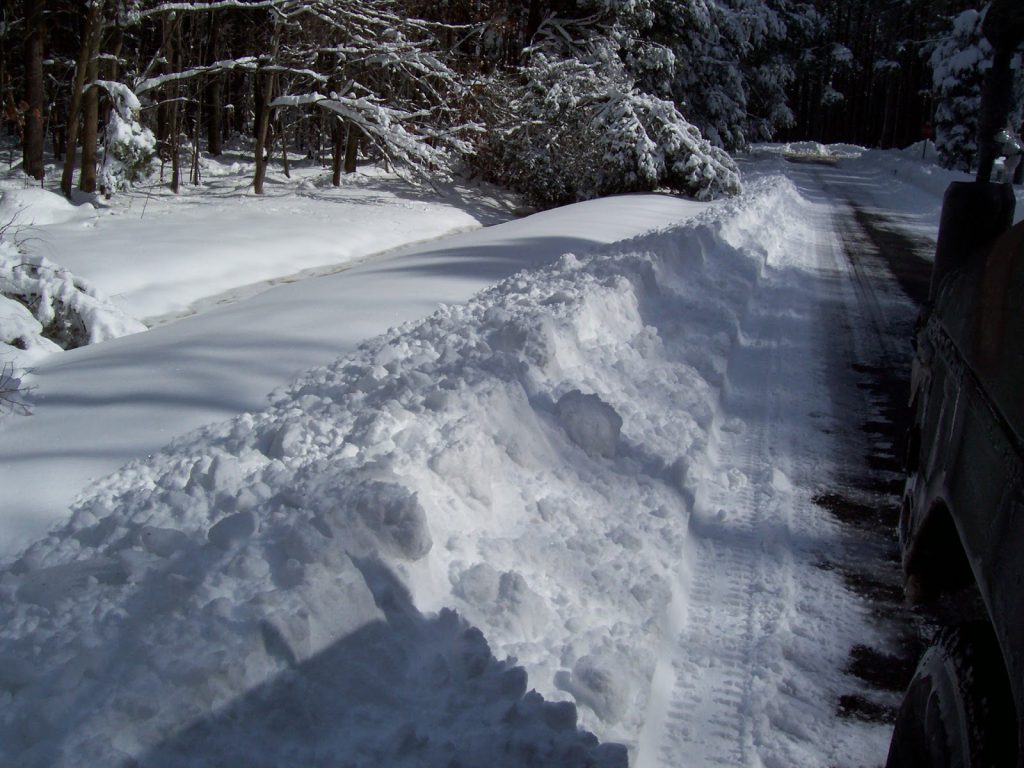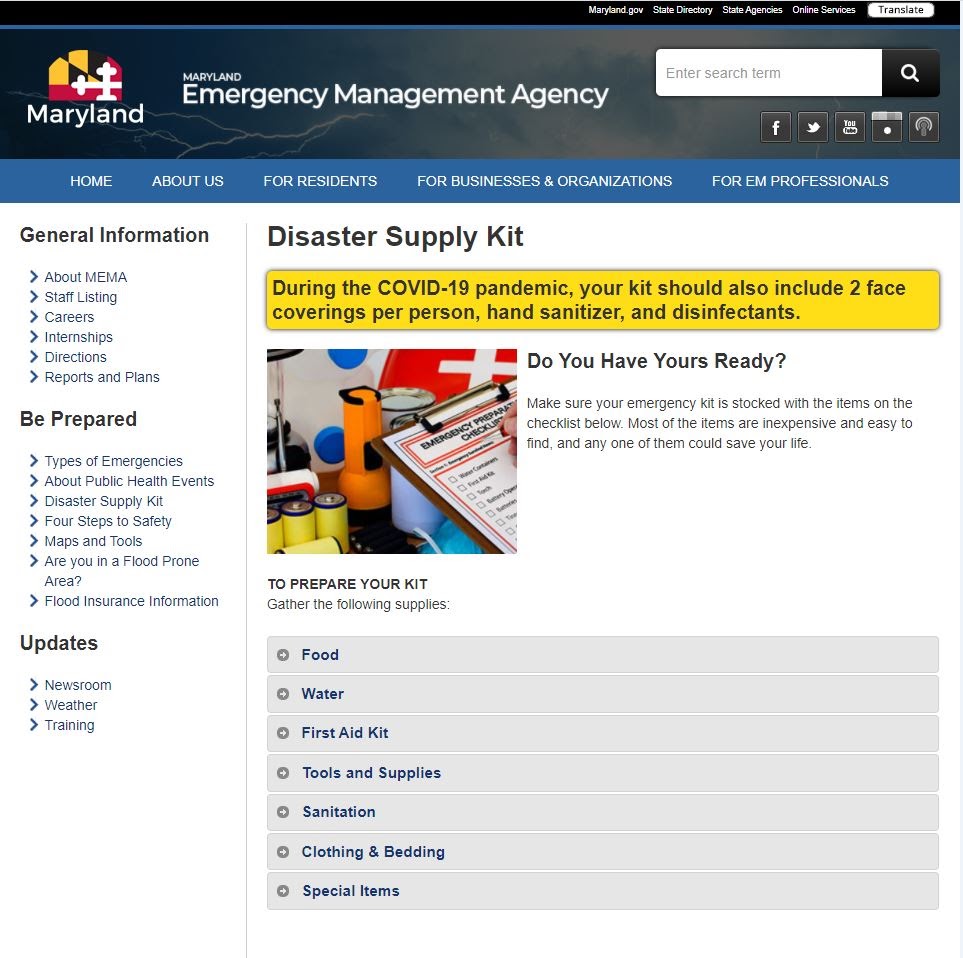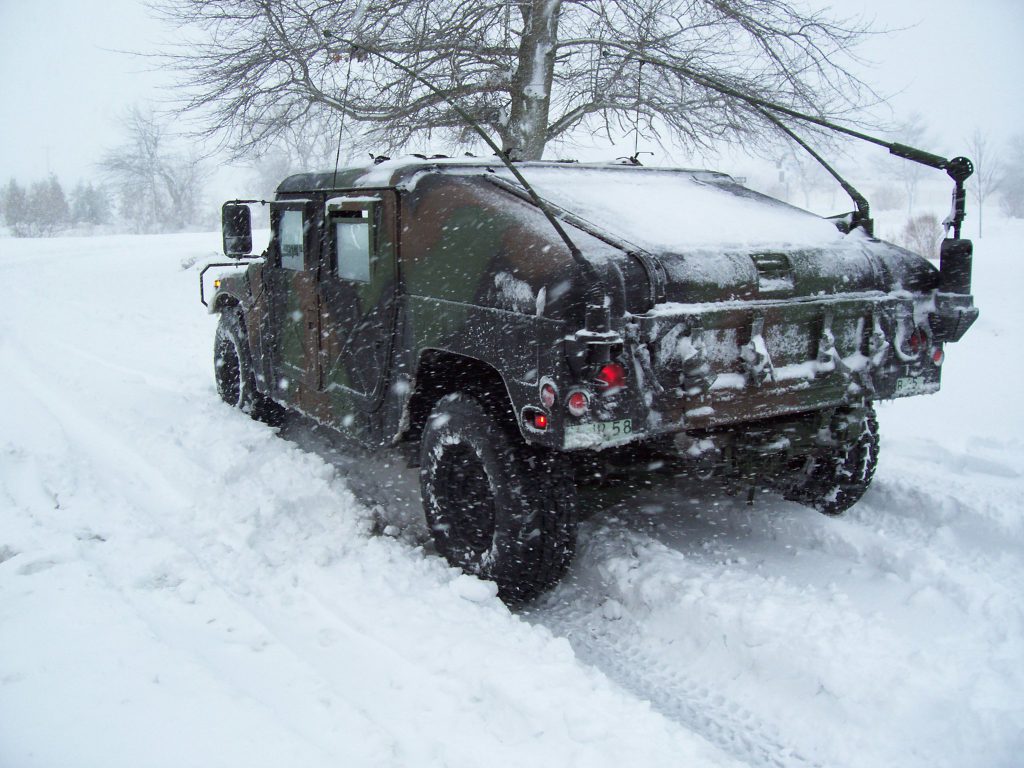MDNG Balances Inclement Weather Response Readiness With COVID-19 Pandemic
Story by U.S. Army National Guard Capt. Jennifer Alston
The onset of winter in Maryland leads to freezing temperatures, icy conditions, and snowstorms. With the ongoing COVID-19 pandemic, there will be additional challenges this year for residents and government officials as they plan to mitigate the effects of inclement weather. The Maryland National Guard responds to weather emergencies with unique capabilities while supporting the state’s COVID-19 response.
The National Oceanic and Atmospheric Administration predicted above average temperatures and normal precipitation this winter season. The announcement of Winter Storm Gail sent Maryland citizens to prepare for the worst.
“Snow is coming,” said Gov. Larry Hogan. “This could be the first major storm of the season.” 
Fortunately, Maryland was spared the brunt of the storm with much of the intensity landing further north. MDNG regularly reviews contingency plans to respond to all types of scenarios, including winter storms, not only in Maryland but also in neighboring states. In the event a natural disaster exceeds a state’s capability to respond or a specialized team or piece of equipment is needed, states can request and move much needed aid and assets through the Emergency Management Assistance Compact. An EMAC is a mutual aid system that allows Guard elements in one state to support response operations in another.
“We were lucky during hurricane season, but we don’t know what winter will bring,” said U.S. Army Brig. Gen. Adam Flasch, director of the MDNG Joint Staff. “The outlook is for a mild winter. But, 2020 has thrown a lot of curveballs.”
The Maryland National Guard has always worked hand in hand with local and state partners in times of crisis providing invaluable capabilities and equipment.
“MDNG vehicles provide four-wheel drive and high clearance capabilities in support of local authorities,” said U.S. Army Lt. Col Charles Funk, Deputy J7 MDNG Joint Staff. “A prudent response capability enabling emergency movement throughout the state during and immediately after winter storms.”
While Winter Storm Gail didn’t pose a threat in Maryland, the snowmageddon in 2014 and 2016 saw the MDNG spring into action in support of emergency organization partners. 
“In the past, we’ve used our equipment and professional operators to transport medical and 911 personnel to and from their places of work, assisted law enforcement in patrols and used engineering equipment to assist in clearing remote roads of snow and fallen trees,” explains Funk. “Additionally, our heavy recovery vehicles have been used to tow fire apparatus out of deep snow in many of the area’s side roads. Sometimes simply driving a military vehicle down a road that hasn’t been plowed to cut ruts in the deep snow is enough to enable a traversable path for emergency vehicles to get through.”
When the forecast of winter precipitation is imminent, it is important for citizens to be prepared on the road or at home. The Maryland Emergency Management Agency app is available for download to provide weather updates and safety tips. The Maryland Department of Transportation website provides safety guidance and tips for driving during inclement weather. However, the most practical safety measure is stay off the roads in potentially dangerous weather.
Additionally, updates and safety guidelines on Maryland’s COVID-19 pandemic response is available at: coronavirus.maryland.gov.

